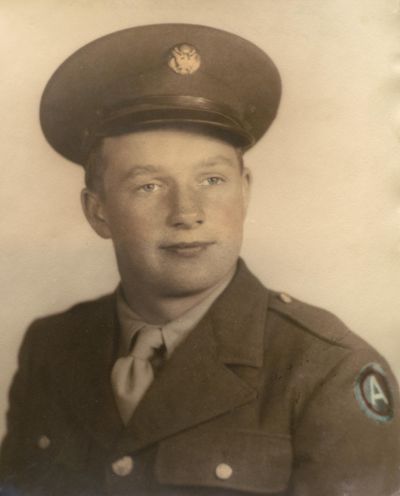Ben Brooks faced deadly reality as he stepped onto bloody Omaha Beach

As his landing craft approached Omaha Beach on the morning of June 6, 1944, Ben Brooks could see bodies floating in the surf.
“I thought they were dummies,” said Brooks, then a 20-year-old anti-aircraft gunner who’d been raised on a sheep ranch near Mountain Home, Idaho.
Then reality sunk in.
A few seconds later, the landing craft commander, a British captain, ordered the craft to lower its gate and drop Brooks and his men into 5 feet of chilly water.
“I’ll tell you what,” Brooks said on Tuesday. “You get dropped off in 5 feet of water with 60 pounds on your back, well, you sink.”
Salvation came from a lieutenant named Micah, who confronted the captain and told him to take the craft closer to shore “or else I’ll blow your head off.”
Brooks counted himself lucky to wade through water that was only 2 feet deep. “When the gate came down, we were very lucky, because we were at high tide and we had gone over the mine ramps,” he said.
But as Brooks stepped onto the bloodstained sand, he was confronted with the full horror of the moment.

In front of him, German snipers and machine gunners took a heavy toll. To his rear, tanks that were supposed to blast the Nazi pillboxes never showed up.
Neither did the special mine-clearing tanks after their flotation devices failed in the rough water of the English Channel.
As a corporal with the 457th Coast Artillery Battalion, Brooks was expected to help set up anti-aircraft guns to deal with German fighters that might strafe the beach.
However, ammunition was in a chaotic state. “We used a lot of ammunition that day,” Brooks said.
Brooks and his comrades walked back to the ammunition ships, “but the line was about two blocks long,” he said. “So we went to another ship.”
Moments later, a net dropped its cargo onto the ship. The men of the 457th found little ammo but the best food on the beach.
“It was hospital rations,” Brooks said. “Peaches, canned ham, you name it. We were the envy of the whole god-danged beach.”

Soon after his brush with death, Brooks had a brush with fame. Two days after the landings, he recalled seeing the Supreme Allied Commander, Gen. Dwight Eisenhower, with generals Omar Bradley, George Patton and Patrick Timberlake.
Brooks and his unit eventually joined Patton’s 3rd Army as it raced across France, slogged into Metz and the Siegfried Line.
Late in 1944, Brooks’ unit shot down a German plane near Patton’s headquarters in Luxembourg.
Several months later, the same anti-aircraft gun was in danger of falling off a pontoon bridge on the Rhine River.
Chafing at the delay, Patton wanted the gun dumped into the river – until a soldier from St. Maries, Idaho, reminded the general it was the same gun that saved him in Luxembourg.
“We can’t dump that!” Patton replied. “Get some men on that!”

Together, they drove through Germany. When the war in Europe ended, Brooks was in Czechoslovakia.
Just as quickly, he made the transition to peacetime. By year’s end he was enrolled at the University of Idaho.
After earning an economics degree, he worked at Murphey Favre in Spokane, then sold securities at Washington Mutual. He and his wife, Annette, raised three children.
Memories of the war return unbidden. Recalling a surprise meeting in a foxhole with General Bradley – “a first-class gentleman” – Brooks broke into a salute.